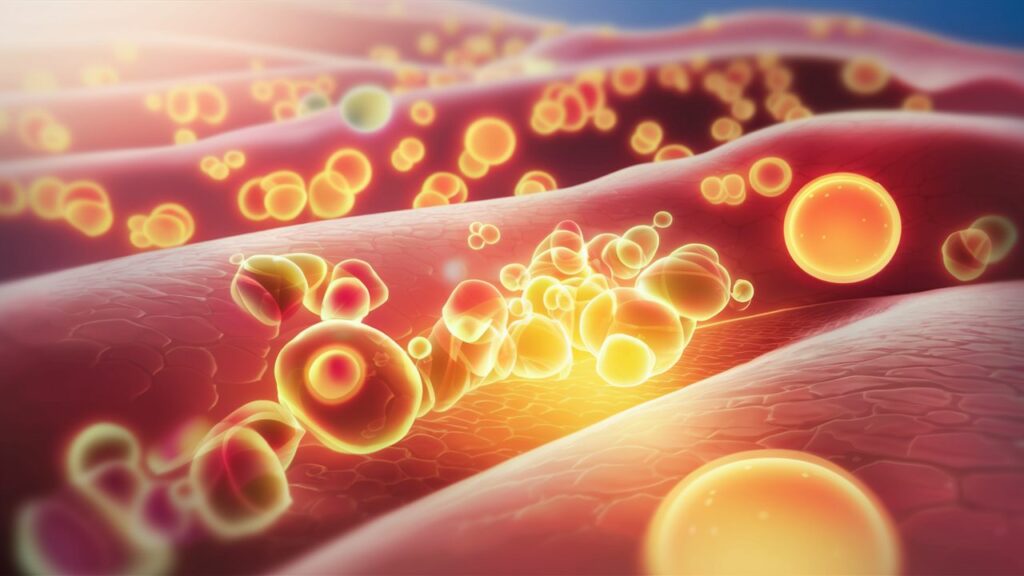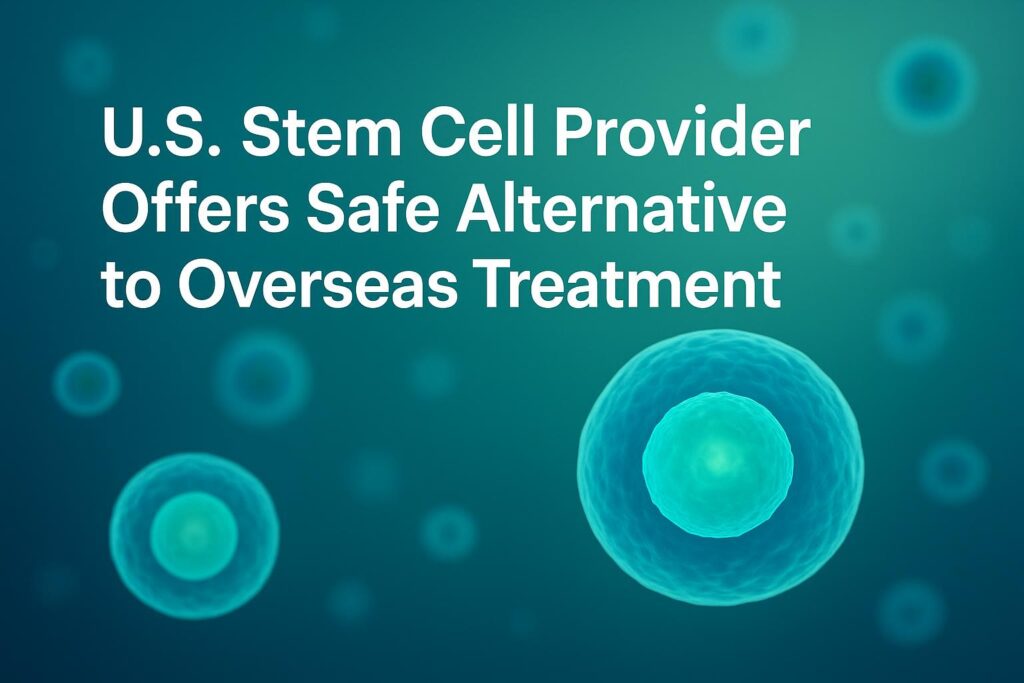Are you tired of struggling with acne scars and their impact on your skin’s appearance?
Look no further. The answer to your skincare woes may lie in the revolutionary field of stem cell therapy. By harnessing the power of stem cells, this cutting-edge treatment offers a promising solution for skin rejuvenation and acne scar treatment.
Stem cell research has opened doors to a new frontier in medical science, with incredible potential for regenerating damaged tissues. But how does stem cell therapy work exactly, and is it truly effective in revitalizing your skin? In this article, we’ll explore the benefits of stem cell therapy for acne scars and delve into the science behind this innovative approach to skincare.
Key Takeaways:
- Stem cell therapy offers a promising solution for acne scar treatment and skin rejuvenation.
- Stem cells have the potential to regenerate damaged tissues and improve the appearance of scars.
- The field of stem cell research is revolutionizing medical science and providing new avenues for skincare.
- We will explore how stem cell therapy works and its effectiveness in revitalizing the skin.
- Stay tuned for an in-depth look at the benefits of stem cells in healing acne scars and the various types of acne scars that can be treated with this innovative therapy.
The Benefits of Stem Cells in Healing Acne Scars
In this section, we will delve into the benefits of using stem cells for healing acne scars. Stem cells have shown great promise in the field of dermatology, particularly in addressing the persistent issue of acne scars.
These remarkable cells possess the ability to regenerate damaged tissues and promote the growth of healthy skin cells, making them an exciting avenue for acne scar treatment.
Understanding the Healing Potential of Stem Cells
Stem cells offer immense healing potential due to their unique characteristics. They are undifferentiated cells, meaning they have the remarkable ability to transform into different cell types. This regenerative capacity allows them to repair damaged tissues and stimulate the production of collagen and elastin, crucial components for healthy, youthful skin.
When it comes to acne scars, stem cells can help minimize their appearance by promoting the growth of new skin cells, effectively replacing the scar tissue with smoother and more even-toned skin. Additionally, stem cells possess anti-inflammatory properties, reducing redness and swelling often associated with acne scars.

The Emerging Field of Stem Cell Acne Scar Treatments
The use of stem cells for acne scar treatment is an exciting and emerging field in dermatology. Researchers and scientists are continually exploring innovative techniques to harness the healing potential of stem cells and enhance their effectiveness in scar reduction.
Advancements in stem cell research have led to the development of cutting-edge treatments such as stem cell injections and stem cell-infused skincare products. These innovative approaches aim to optimize the delivery of stem cells to the affected areas, maximizing their regenerative capabilities and improving the overall outcome of acne scar treatment.
| Treatment | Benefits |
|---|---|
| Stem Cell Injections | Directly delivers stem cells to the scar tissue for targeted healing |
| Stem Cell-Infused Skincare | Promotes continuous regeneration and improvement of the skin |
As the field of stem cell acne scar treatments continues to evolve, researchers are optimistic about the potential to achieve even more significant improvements in scar reduction and skin rejuvenation.
With ongoing advancements, stem cell therapy may soon become a mainstream option for individuals seeking effective solutions for their acne scars.
Types of Acne Scars and the Role of Stem Cell Therapy
In this section, we will delve into the different types of acne scars and explore how stem cell therapy can play a crucial role in their treatment. Acne scars can vary in appearance and severity, and understanding the characteristics of each type is essential to determine the most effective treatment approach.
There are several types of acne scars, including:
- Ice pick scars: These scars are narrow and deep, resembling small holes or punctures in the skin. They are usually caused by inflamed acne.
- Boxcar scars: Boxcar scars are wider and have sharply defined edges. They can vary in depth and are often caused by inflammatory acne.
- Rolling scars: Rolling scars have a wave-like appearance and tend to be shallow. They are usually caused by damage to the skin’s collagen fibers.
- Hypertrophic scars: Hypertrophic scars are raised and thickened, often occurring in areas where there has been excessive collagen production during the healing process.
- Atrophic scars: Atrophic scars are characterized by depressions or indentations in the skin. They can be further classified as shallow or deep, depending on their severity.
Stem cell therapy holds great promise in treating acne scars, regardless of the type. Stem cells have the unique ability to differentiate and regenerate damaged tissues, promoting the growth of new, healthy skin cells. This regenerative process can help improve the appearance of scars and restore the skin’s smooth texture and tone.
By harnessing the regenerative properties of stem cells, dermatologists and researchers are exploring innovative ways to utilize stem cell therapy for acne scar treatment. This approach aims to address the root causes of scarring and enhance the natural healing process of the skin.
Next, we will dive into the procedure involved in stem cell therapy for acne scars, and how stem cells are utilized to achieve remarkable results.
Stem Cell Therapy for Acne Scars: An In-Depth Look at the Procedure
In this section, we will provide an in-depth understanding of the stem cell therapy procedure for acne scars. Exploring how stem cells are harvested and utilized in the treatment process, we aim to shed light on this innovative approach to scar treatment.
From Harvesting to Treatment: How Stem Cells are Utilized
Stem cell therapy for acne scars starts with the harvesting of stem cells from the patient’s own body. This process involves extracting stem cells from a specific source, such as adipose tissue (fat) or bone marrow. These stem cells are then processed and isolated in a sterile environment to ensure their purity and effectiveness.
Once the stem cells are ready for treatment, they are carefully injected into the affected areas of the skin. This can be done through techniques like microneedling or direct injection, depending on the severity and type of acne scars. The stem cells work by promoting tissue regeneration, collagen formation, and enhancing the overall healing process.
It is important to note that stem cell therapy for acne scars is a minimally invasive procedure that is typically performed on an outpatient basis. The treatment is tailored to the individual’s specific needs and desired outcomes, ensuring a personalized approach to scar treatment.
Post-Procedure: What to Expect After Undergoing Stem Cell Therapy
After undergoing stem cell therapy for acne scars, it is crucial to follow post-procedure care instructions to maximize the effectiveness of the treatment and support the healing process. While individual experiences may vary, here are some common aspects to expect:
- Recovery period: The recovery period after stem cell therapy for acne scars is relatively short, with most patients experiencing minimal downtime. However, it is normal to expect some redness, swelling, and mild discomfort in the treated areas for a few days.
- Results and improvements: The results of stem cell therapy may vary depending on the individual’s skin condition and the severity of the acne scars. It is important to have realistic expectations and understand that it may take several weeks or even months to fully appreciate the improvements in the skin’s appearance.
- Follow-up appointments: Your healthcare provider may schedule follow-up appointments to monitor your progress and ensure proper healing. These appointments are an opportunity to address any concerns or questions you may have and make adjustments to your post-procedure care as necessary.
- Potential side effects: While stem cell therapy for acne scars is generally safe, there can be potential side effects. These can include temporary bruising, infection, or allergic reactions. It is important to promptly notify your healthcare provider if you experience any unusual or concerning symptoms post-treatment.
As with any medical procedure, it is crucial to consult a qualified healthcare professional before undergoing stem cell therapy for acne scars. They can assess your individual situation, provide personalized recommendations, and guide you through the entire process, ensuring the best possible outcomes.
Assessing the Effectiveness of Stem Cell Therapy for Acne Scars
When considering treatment options for acne scars, it is important to assess the effectiveness of different methods. Stem cell therapy has gained attention in recent years as a potential solution for improving the appearance of acne scars. In this section, we will explore the scientific evidence behind the effectiveness of stem cell therapy and compare it to other available treatment options.
Clinical Trials and Studies
Scientific research plays a crucial role in determining the effectiveness of any treatment, including stem cell therapy for acne scars. Several clinical trials and studies have been conducted to evaluate the outcomes of stem cell treatments.
These studies have shown promising results, indicating that stem cell therapy can effectively improve the appearance of acne scars. Stem cells have the unique ability to regenerate damaged tissues and stimulate the growth of healthy skin cells. This regeneration process can lead to a smoother and more even complexion, reducing the visibility of acne scars.
Comparing Treatment Options
While stem cell therapy shows promise, it is essential to consider other available treatment options for acne scars as well. Each treatment has its own strengths and limitations, and what works for one individual may not work for another.
| Treatment Option | Advantages | Disadvantages |
|---|---|---|
| Laser Therapy | – Can target specific scar types – Can stimulate collagen production – Minimal downtime | – May require multiple sessions – Potential for skin sensitivity – Possible hyperpigmentation risks |
| Chemical Peels | – Can improve skin texture – Can reduce the appearance of scars – Affordable | – May require multiple treatments – Potential for skin irritation – Limited effectiveness for deep scars |
| Dermal Fillers | – Can temporarily fill in depressions – Immediate results – Non-invasive | – May necessitate repeat treatments – Potential for mild swelling/bruising – Temporary improvement |
It’s important to consult with a dermatologist or skincare professional to determine the best treatment approach for your specific case of acne scars. They will consider factors such as scar type, severity, and your skin’s individual response to different treatments.
While stem cell therapy shows promise in improving acne scars, it is still a relatively new field of research. More studies are needed to further evaluate its long-term efficacy and determine its optimal applications. However, the existing evidence suggests that stem cell therapy can be a valuable and effective treatment option for acne scars.
Conclusion
After exploring the benefits of stem cell therapy for acne scars, it is clear that this innovative treatment option holds immense potential. Stem cell therapy offers a natural and effective solution for revitalizing the skin and improving the appearance of acne scars.
The healing potential of stem cells plays a significant role in promoting the growth of healthy skin cells, which can help reduce the visibility of scars. Additionally, the emerging field of stem cell acne scar treatments is continuously advancing, paving the way for further improvements and breakthroughs.
If you are considering acne scar treatment, stem cell therapy should be on your radar. Its effectiveness, coupled with its ability to regenerate damaged tissues, makes it a compelling choice. However, it is important to consult with a qualified dermatologist or medical professional to determine if stem cell therapy is the right option for your specific needs and skin condition.
Overall, stem cell therapy for acne scars holds promise for those seeking a safe and natural treatment option. With further research and advancements, it may become a mainstream solution for individuals looking to rejuvenate their skin and achieve long-lasting results.
FAQ
What is stem cell therapy for acne scars?
Stem cell therapy for acne scars is a treatment that uses the regenerative properties of stem cells to improve the appearance of scars. Stem cells are capable of repairing damaged tissues and promoting the growth of healthy skin cells.
How do stem cells help in healing acne scars?
Stem cells have the potential to promote tissue regeneration and repair damaged skin. When used in acne scar treatment, they help to stimulate the growth of new collagen and improve the texture and appearance of the scarred area.
Is stem cell therapy an effective treatment for all types of acne scars?
Stem cell therapy has shown promising results in improving various types of acne scars, including atrophic scars, rolling scars, and hypertrophic scars. However, the effectiveness may vary depending on the severity and characteristics of the scars.
How is stem cell therapy for acne scars performed?
Stem cell therapy for acne scars typically involves harvesting stem cells from the patient’s own adipose tissue (fat) through a minimally invasive procedure. These stem cells are then processed and injected into the scarred area to promote tissue regeneration and improve skin quality.
What can I expect after undergoing stem cell therapy for acne scars?
After undergoing stem cell therapy, you may experience some redness and swelling at the injection site. The recovery time varies for each individual, but improvements in the appearance of scars can usually be seen within a few weeks to a few months after the treatment.
Are there any risks associated with stem cell therapy for acne scars?
Stem cell therapy is generally considered safe, as the stem cells used are derived from the patient’s own adipose tissue. However, as with any medical procedure, there may be potential risks and side effects, such as infection or allergic reactions. It is important to consult with a qualified healthcare professional to discuss the potential risks and benefits before undergoing the treatment.
How does stem cell therapy compare to other treatment options for acne scars?
Stem cell therapy offers a novel approach to treating acne scars by utilizing the regenerative properties of stem cells. While other treatment options such as laser therapy, chemical peels, and dermal fillers may also be effective, stem cell therapy shows promise in promoting long-lasting improvements in skin texture and appearance.
Is stem cell therapy the right treatment option for me?
The suitability of stem cell therapy as a treatment option for acne scars depends on various factors, including the severity and type of scars, overall health, and individual circumstances. It is recommended to consult with a dermatologist or healthcare professional to determine the most appropriate treatment option for your specific needs.
Are there any limitations to stem cell therapy for acne scars?
While stem cell therapy has shown promising results in improving acne scars, it is important to note that individual results may vary. Additionally, the availability of stem cell therapy may be limited, and more research is needed to fully understand its efficacy and long-term effects.



